When you venture into the outdoors in Oklahoma, especially around water bodies, you should know what kinds of creatures you might encounter. The six water snakes below call Oklahoma home but only one of them poses a danger and is best admired from afar. Can you guess which?
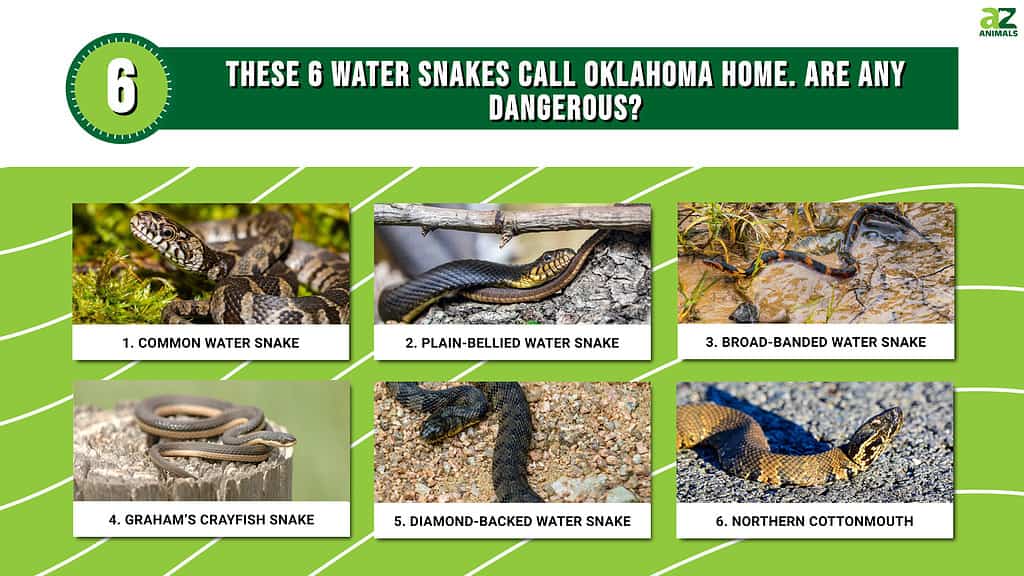
6 Water Snakes That Call Oklahoma Home
1. Common Water Snake
Scientific name: Nerodia sipedon
You can find two non-venomous common water snake species that call Oklahoma home, including the northern water snake and the midland water snake. You can distinguish each by its color. The northern water snake, for example, is typically gray or dark brown. They have bands on their bodies that may appear either a reddish-brown color or may appear black.

There are two subspecies of the common water snake in Oklahoma.
©Jay Ondreicka/Shutterstock.com
As these snakes age, their colors deepen, sometimes making them appear more of a solid dark brown or black. The midland water snake, if gray, is significantly lighter than the northern subspecies. If not gray, they may have more of a reddish base tone. These snakes have bands but only near their heads. As you look down at the rest of their bodies, the bands stop and get replaced by dark splotches shaped kind of like squares.
2. Plain-bellied Water Snake
Scientific name: Nerodia erythrogaster
Plain-bellied water snakes are sturdy with thick bodies. They grow up to 40 inches long and unlike the common water snake, aren’t banded or splotchy. Their colors are solid and may be black, brown, gray, or olive. On their bellies, the color is also unmarked. Their belly colors contrast with their top colors and may be as light as yellow or as dark as red.
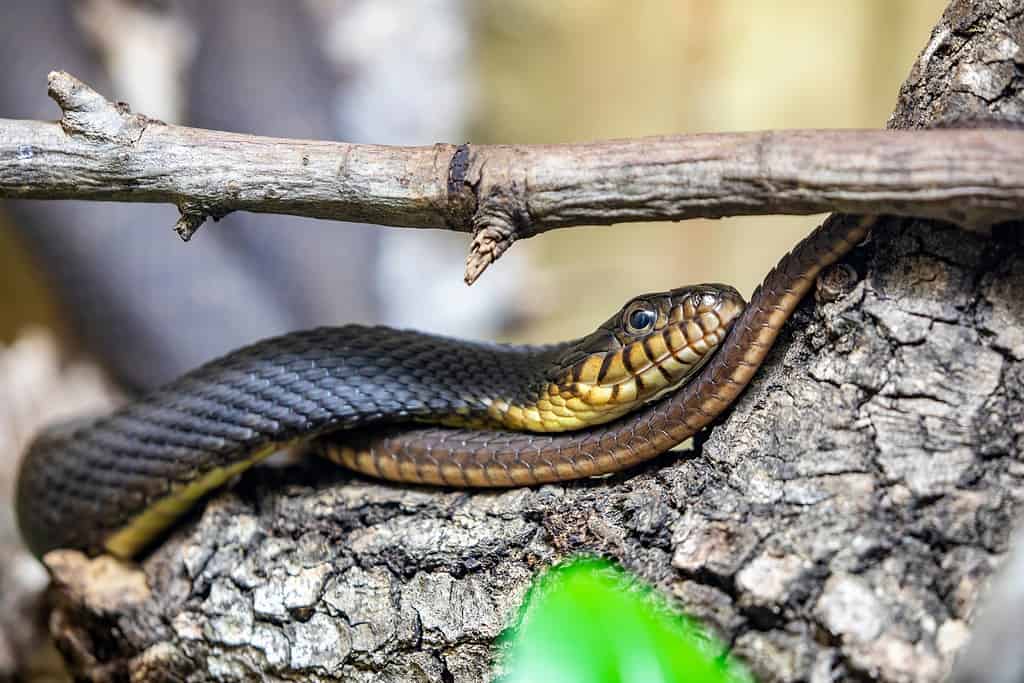
Plain-bellied water snakes have thick bodies.
©Danny Ye/Shutterstock.com
These non-venomous snakes enjoy being around water sources, whether they be lakes and ponds or rivers and wetlands. Whereas many water snakes spend most of their time in the water, the plain-bellied water snake also enjoys traversing the land in the state. This is particularly true when the weather changes and gets hot and humid.
3. Broad-Banded Water Snake
Scientific name: Nerodia fasciata
The broad-banded water snake calls Oklahoma home and is a dark-colored snake, usually appearing black except for the yellowish bands on its body. It can grow up to 48 inches long and gravitates to freshwater sources. This could be a lake, marsh, or stream. They enjoy sunning themselves and are extravagant when they do, carefully selecting a branch over the water, and climbing onto it to enjoy the sun and look down onto the water below.
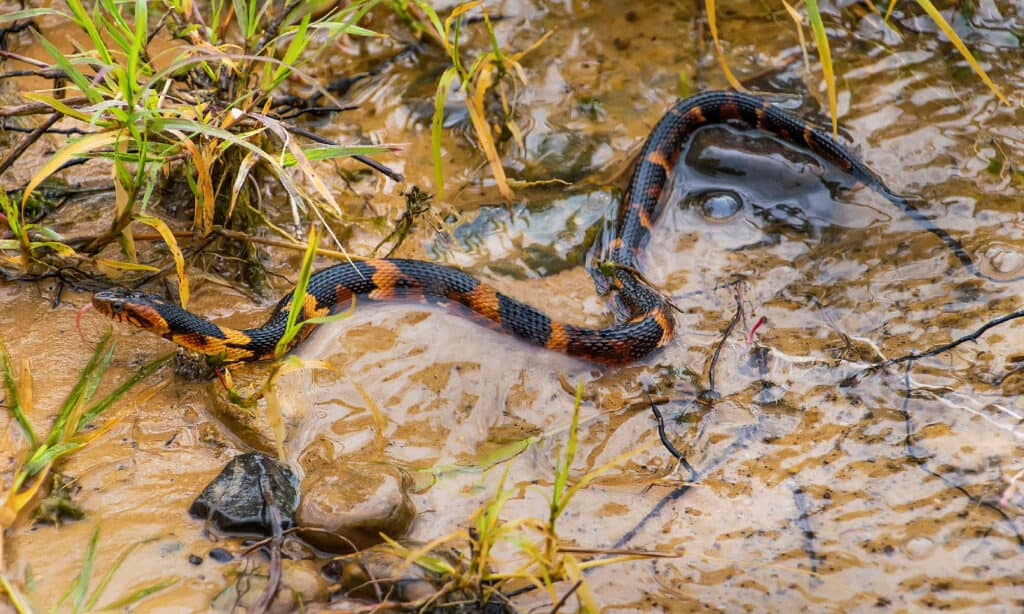
Broad-banded water snakes enjoy sunning themselves.
©iStock.com/williamhc
These snakes enjoy snacking on amphibians and fish, and you typically won’t spot them hunting during the day. They prefer the cover of nightfall to engage in hunting activities. They’re quick when they hunt, snatching up the prey they find and swallowing it whole while it’s still conscious. These snakes are non-venomous and aside from presenting a danger to their prey, they are quite tame.
4. Graham’s Crayfish Snake
Scientific name: Regina grahamii
Graham’s crayfish snake grows up to 28 inches long and varies in color. Some are kind of dull brown with yellowish stripes down their sides. Others are darker gray with tan stripes. You’re unlikely to see these in Oklahoma — not because they don’t live in the state but because they are a withdrawn bunch! In keeping with their don’t-want-to-be-bothered attitudes, they hang out near water sources that move lazily like prairie streams or even roadside channels.
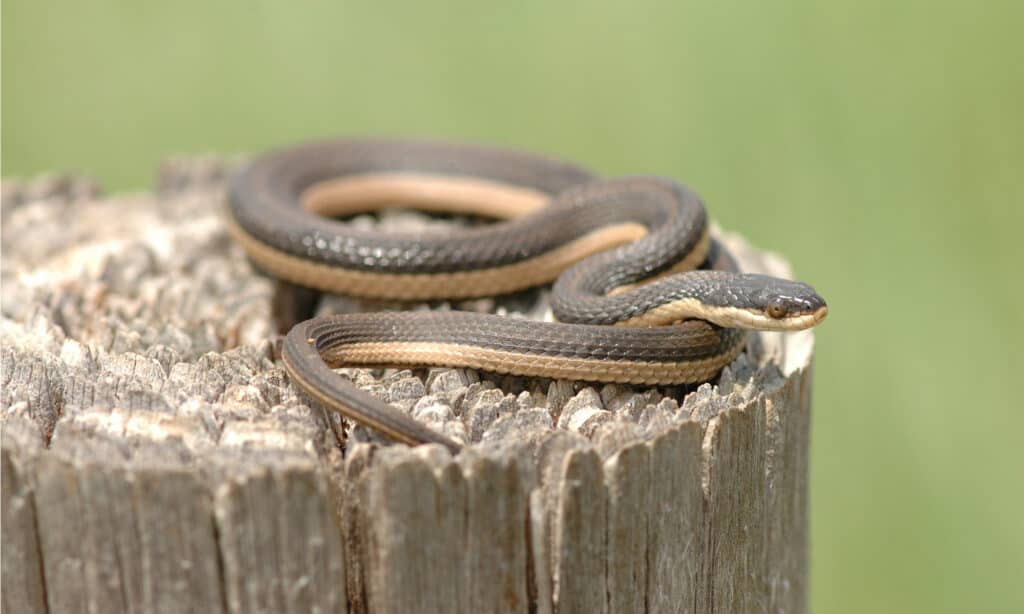
Graham’s crayfish snake is commonly seen around ponds and other slow moving bodies of water.
©Rusty Dodson/Shutterstock.com
These snakes love snacking on crayfish, hence their name. They do expand their menu items to amphibians and fish but have a primary love for soft-bodied crayfish. These snakes are non-venomous and unfortunately, they are often mistaken for venomous snakes, which puts them in danger when humans attempt to kill them.
5. Diamond-backed Water Snake
Scientific name: Nerodia rhombifer
The diamond-backed water snake is non-venomous and grows up to 48 inches long. They have a tell-tale chain-like pattern that runs down their bodies and their base color varies. They might be olive green, dark brown, or yellowish. Their bellies are lighter than their bodies, usually kind of a yellowish color with dark markings. They are drawn to slow-moving streams and rivers and also enjoy swampy environments.
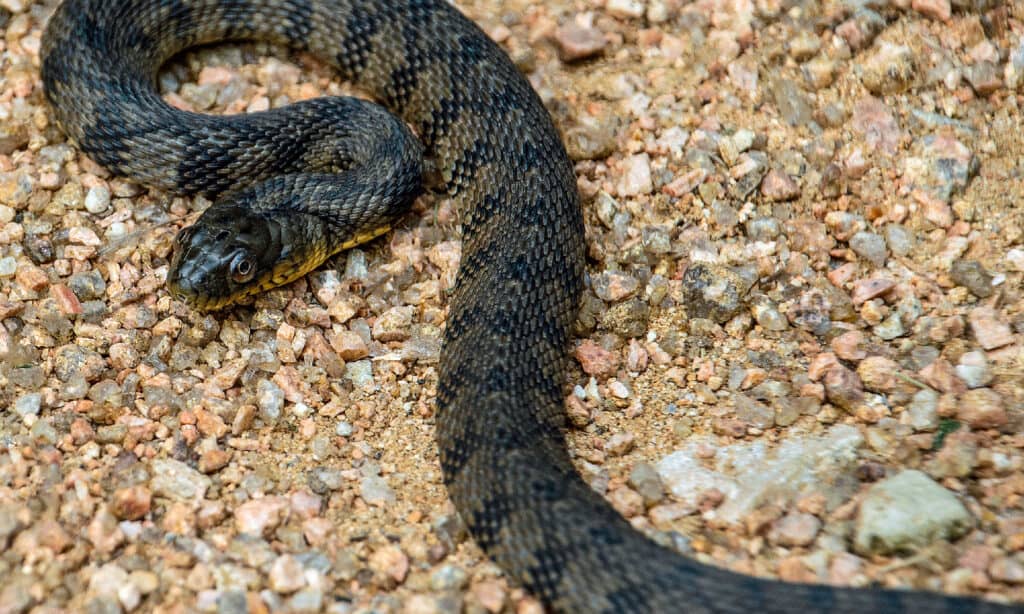
, the diamond-backed water snake, lives only in freshwater, not salt water.
©iStock.com/williamhc
6. Northern Cottonmouth
Scientific name: Agkistrodon piscivorus
Northern cottonmouths are venomous water snakes that call Oklahoma home and can grow up to 35 inches long. Most of the time, they are dark colored, either gray or black. They have broad heads and go by other names, including gapers and water moccasins. These snakes gravitate to swamps, streams, rivers, and marshes, and may also venture into non-aquatic environments like forests and prairies. This is the only venomous water snake you need to be mindful of in Oklahoma.
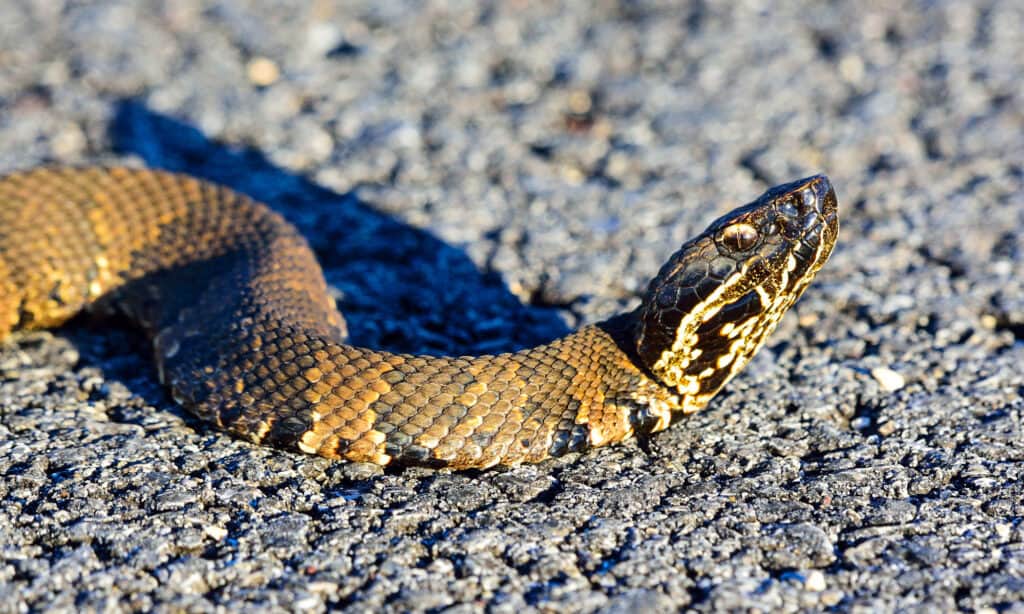
Northern cottonmouths are venomous snakes.
©Ad Konings/Shutterstock.com
Summary of 6 Water Snakes That Call Oklahoma Home. Are Any Dangerous?
| Number | Snake |
|---|---|
| 1 | Common Water Snake |
| 2 | Plain-bellied Water Snake |
| 3 | Broad-Banded Water Snake |
| 4 | Graham’s Crayfish Snake |
| 5 | Diamond-backed Water Snake |
| 6 | Northern Cottonmouth |
The photo featured at the top of this post is © Seth LaGrange/Shutterstock.com
Discover the "Monster" Snake 5X Bigger than an Anaconda
Every day A-Z Animals sends out some of the most incredible facts in the world from our free newsletter. Want to discover the 10 most beautiful snakes in the world, a "snake island" where you're never more than 3 feet from danger, or a "monster" snake 5X larger than an anaconda? Then sign up right now and you'll start receiving our daily newsletter absolutely free.
Thank you for reading! Have some feedback for us? Contact the AZ Animals editorial team.






